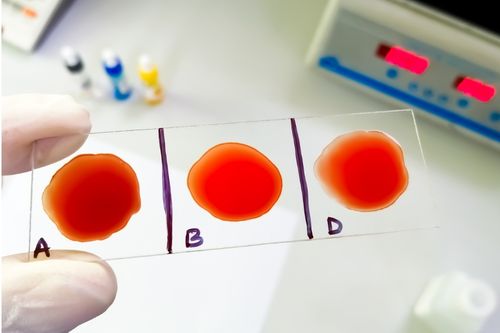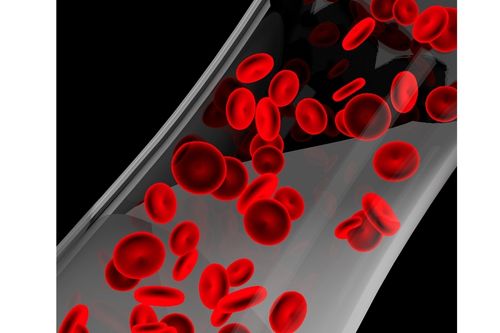Table of Contents
- What is the study of blood?
- Anatomy and functions of blood
- Areas of study
- Subdisciplines of hematology
- Hematology tests
- Complete blood count (CBC) includes
- Platelet count (usually done as part of the CBC)
- Prothrombin time (PT), Partial Thromboplastin Time (PTT), International Normalized Ratio (INR)
- Other hematology tests include
- Key takeaways
- FAQs
The study of blood in the medical field covers the treatment of blood disorders and cancers, such as hemophilia, blood clots, leukemia, lymphoma, myeloma, and sickle cell anemia. Hematology is an internal medicine specialty focusing on physiology, pathophysiology, etiology, diagnosis, treatment, prognosis, and prevention of blood-related illnesses.
What is the study of blood?

Hematology is the study of blood and disorders related to it. Hematologists and hematopathologists are highly trained healthcare experts specializing in blood and blood-component diseases. Blood and bone marrow cells are two examples of blood components. Hematological testing detects anemia, infection, hemophilia, blood clotting, and leukemia.
Hematologists are mostly concerned with lymphatic systems and bone marrow and can diagnose blood count or platelet anomalies. They are for organs that nourish blood cells, such as the lymph nodes, spleen, thymus, and lymphoid tissue.
Anatomy and functions of blood
Blood comprises various components, including red blood cells, white blood cells, platelet, and plasma (55% of the volume). Red blood cells (RBCs or erythrocytes), which account for around 45% of total blood volume, transport oxygen from the lungs to the body’s tissues. They also transport carbon dioxide back to the lungs for exhalation. They have a disc shape and are made in the bone marrow.
White blood cells (also known as WBCs or leukocytes), produced in the bone marrow, aid in the fight against infection. Combined with platelets, they account for less than 1% of total blood volume. Platelets (also known as thrombocytes) are colorless, tiny fragments that cling together and interact with clotting proteins to halt or prevent bleeding. They are also made in the bone marrow.
Plasma is the yellowish fluid component of blood. 92% water, with 7% essential proteins and 1% mineral salts, carbohydrates, lipids, hormones, and vitamins.
Areas of study
Below given concepts are studied and researched in hematology-
Hematology is divided into four key areas of study-hemoglobinopathy, hematologic malignancies, anemia, and coagulopathy.
The study of abnormalities in the globin chains of hemoglobin molecules is known as hemoglobinopathy. Hemoglobinopathy also includes thalassemia (erythropoiesis) and sickle cell anemia.
Hematologic malignancies are tumors of the bone marrow, blood, and lymph nodes that must be diagnosed and treated.
Myeloma, like leukemia and lymphoma, is a form of hematologic cancer. A hematologist can also treat arterial thromboembolism, deep vein thrombosis, and neutropenia.
Subdisciplines of hematology

Hematology oncology
Although hematologists collaborate with experts from various medical and surgical specialties, hematology is most frequently associated with oncology.
Hematologists and oncologists collaborate to treat adults and children with blood and bone marrow malignancies, such as leukemia and lymphoma.
A hematologist is typically a board-certified intern or pediatrician with additional years of hematology training. The hematologist’s primary focus is on direct patient care and the diagnosis and management of hematologic illness, particularly cancer.
Hematopathology
A hematopathologist is often board-certified in anatomical and clinical pathology, with additional years of hematopathology study. Hematopathology is more than just the study of blood and bone marrow diseases. It also studies organs and tissues that rely on blood cells to accomplish physiologic functions. The lymph nodes, spleen, thymus, and other lymphoid tissue are some of their examples. The hematopathologist specializes in the diagnosis of hematopoietic and lymphocyte-rich tissue disorders. This is normally accomplished in the lab by directly examining tissue and blood.
Hematology tests
The complete blood count, or CBC, is one of the most used hematological tests. The test is frequently performed as part of a normal examination and can reveal anemia, clotting issues, blood malignancies, immune system diseases, and infections.
Complete blood count (CBC) includes
- White blood cell count (WBC)
- Red blood cell count (RBC)
- Platelet count
- Hematocrit red blood cell volume (HCT)
- Hemoglobin concentration (HB) is the oxygen-carrying protein in red blood cells.
- Differential white blood count
- Red blood cell indices (measurements)
Use
To aid in the diagnosis of anemia, some blood malignancies, and inflammatory illnesses and to monitor blood loss and infection
Platelet count (usually done as part of the CBC)
Use
Certain types of bleeding and clotting abnormalities are diagnosed and/or monitored.
Prothrombin time (PT), Partial Thromboplastin Time (PTT), International Normalized Ratio (INR)
Use
Assess bleeding and clotting issues and keep track of anticoagulation (anticlotting) treatments.
A bone marrow biopsy is not a common test, although it is used often by hematologists. It entails extracting cells from the bone marrow and analyzing them for various diseases.
Other hematology tests include
- Blood chemistry test
- Blood enzyme test
- Blood tests to assess heart disease risk.
Key takeaways
- The study of blood includes treating disorders and diseases that affect the formation of blood and its components, such as blood cells, hemoglobin, blood proteins, bone marrow, platelets, etc.
- Blood is made up of various components, such as red blood cells, white blood cells, platelets, and plasma (55% of the volume). Red blood cells account for around 45% of total blood volume. These cells transport oxygen from the lungs to the body’s tissues.
- The complete blood count, or CBC, is one of the most used hematological tests. The test is frequently performed as part of a normal examination and can reveal anemia, clotting issues, blood malignancies, immune system diseases, and infections.
Did you find this blog informative? If so, please share your thoughts in the comments section below. Click here to contact us for more information on the study of blood. We would be happy to assist you with your queries.
Liked this blog? Read next: What exactly is ophthalmology? – Study of eye
FAQs
Q1. How many cells are in the blood?
Ans- Men have between 4.7 and 6.1 million red blood cells per microliter of blood.
Women have between 4.2 and 5.4 million red blood cells per microliter of blood.
Children’s blood contains 4.0 to 5.5 million red blood cells per microliter.
Q2. Which blood cell count is the maximum in blood?
Ans- Red blood cells comprise most of the blood, accounting for approximately 40-45% of its volume.
Q3. Which is the smallest blood cell?
Ans- Blood platelets are the smallest blood cells, measuring roughly 2 to 4 micrometers in diameter.







